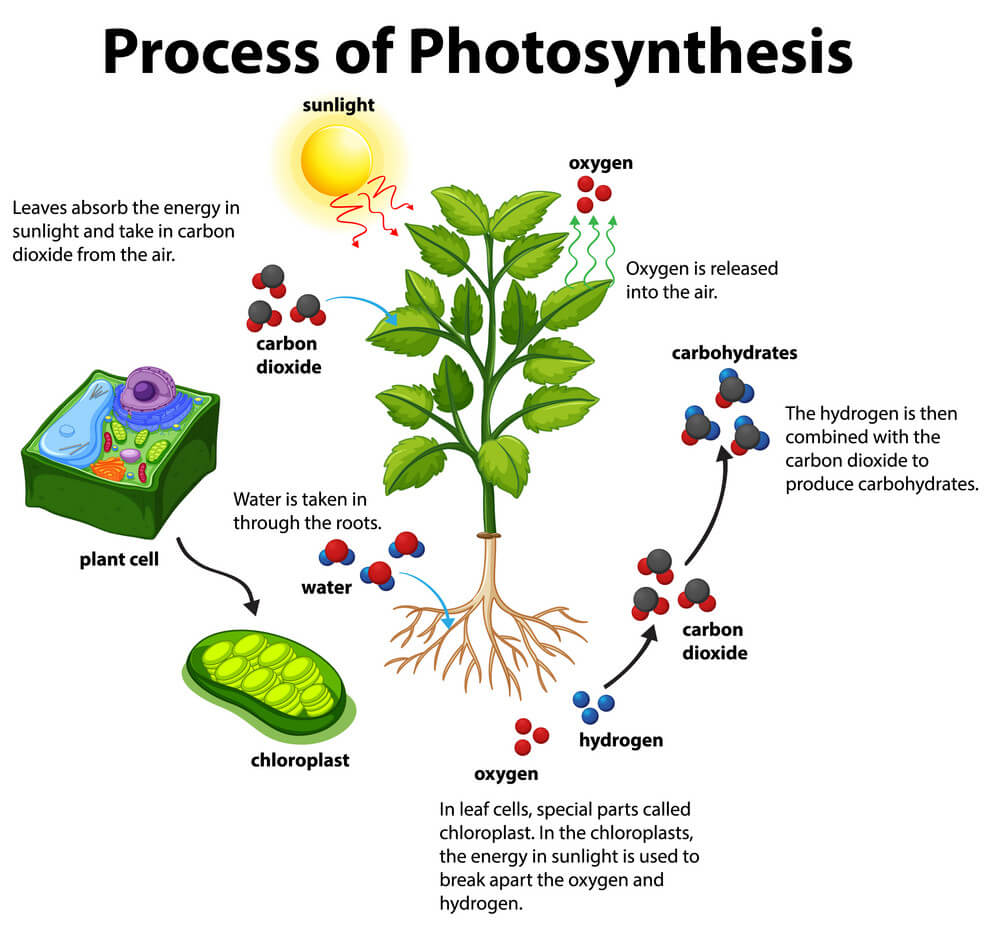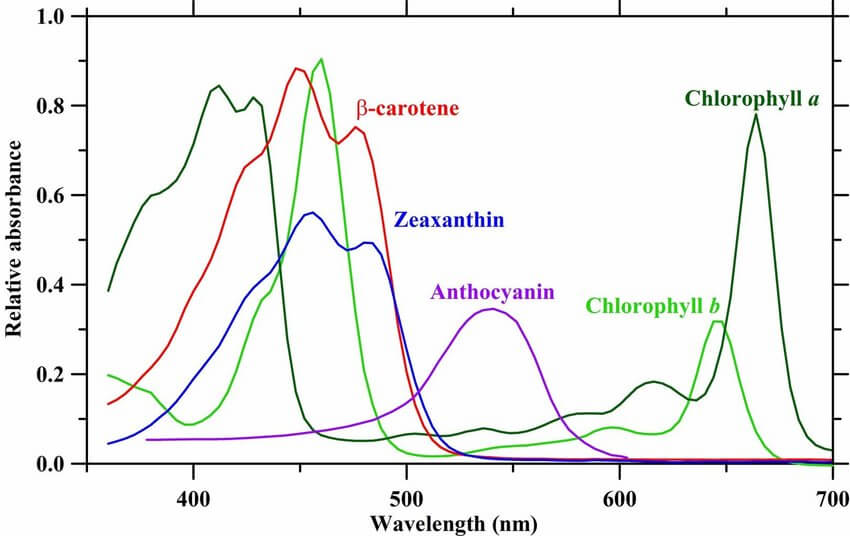Photosynthesis usually refers to the process by which green plants absorb light energy, convert carbon dioxide and water into energy-rich organic matter, and release oxygen at the same time. The significance of photosynthesis is to convert inorganic substances into organic substances, and at the same time convert light energy into chemical energy, so as to maintain the balance of oxygen and carbon dioxide concentrations in the atmosphere.

The importance of plant photosynthesis is that it can provide food, energy, oxygen for respiration and ozone layer to defend against ultraviolet rays for all living things through photosynthesis, becoming the basis, key link and driving force for the formation, development, prosperity and continuous operation of the biosphere.
In photosynthesis, only chlorophyll a directly participates in the light reaction of photosynthesis, its absorption wavelength peaks are 432nm and 660nm, and chlorophyll b absorption wavelength peaks are 458nm and 642nm. Because chlorophyll b transmits 100% of the absorbed energy to chlorophyll a, and other pigments also absorb light of different wavelengths in sunlight, and then pass it to chlorophyll a, but the energy transfer efficiency is not too high. Therefore, the light waves that mainly promote photosynthesis are blue light near 432 nm and red light near 660 nm.

Chlorophyll a and chlorophyll b each have two absorption bands, the blue band and the red band, respectively. The central wavelengths of the absorption bands are 432 nm, 458 nm and 660 nm, 642 nm, respectively. In photosynthesis, green light with the strongest energy in sunlight has little effect and is reflected and transmitted, which makes it very unfavorable for plants to make full use of solar energy.
From the above results, it can be inferred that only part of the light in the sun’s panchromatic spectrum is absorbed by plants. According to the theory of quantum mechanics, when sunlight irradiates plants, only those photons whose frequency is equal to the natural frequency of the chlorophyll a molecule in certain energy levels can be absorbed, causing the chlorophyll a molecule to produce electronic transitions for photosynthesis.
Therefore, for specific plants, we need to strongly supplement the light in the required bands in its spectrum to better promote the photosynthesis of plants. Kingrowlight LED grow lights can be targeted to different plants and their specific The spectrum provides professional matching solutions, so that plants can meet the growth needs of a healthy light environment during the growth process.
